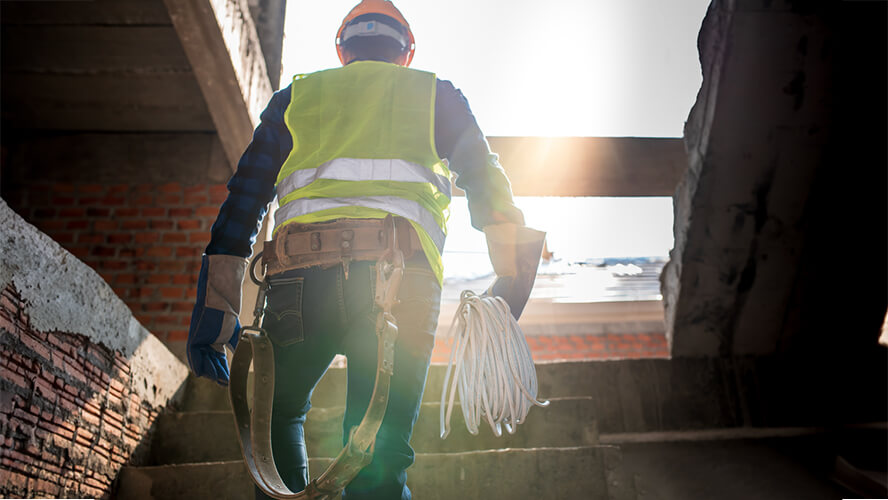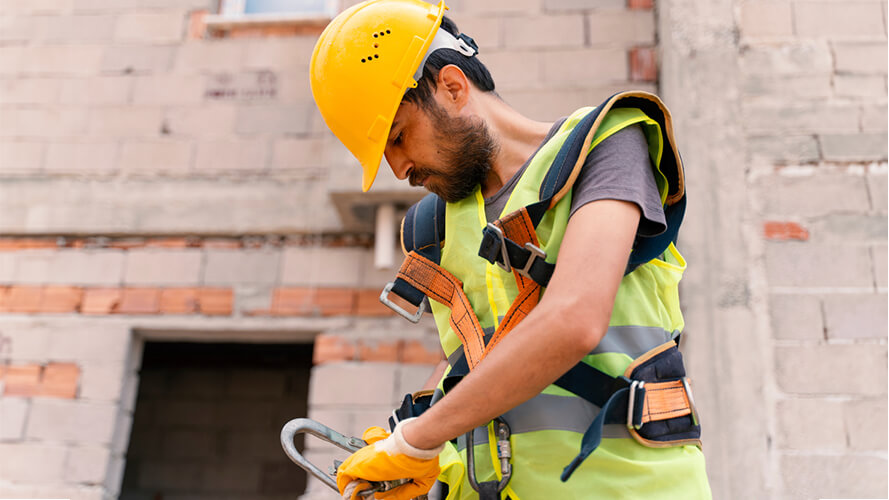Does your construction PPE fit?
Construction workers need personal protective equipment that’s actually personal—helmets, eye wear and vests to fit each person’s unique size and shape. That’s why in July 2023, the Department of Labor issued a notice of proposed rulemaking to clarify PPE standards for the industry. While OSHA’s general industry and maritime standards require properly fitting PPE, the construction standards don’t, leaving many workers in one of the riskiest industries poorly protected.
A notice of proposed rulemaking is just the beginning of a very long process—one that will take input from employers, equipment manufacturers and, ideally, the workers it affects. But, it is a sign that there’s growing pressure on construction employers to accept the changing PPE needs of a diversifying workforce, one with more women and physically smaller employees.
The risks of poorly fitting PPE
Depending on the job site and skill set, construction workers may require:
- Body protection, like jackets, suits and high-visibly gear
- Leg and foot protection
- Hand protection against impacts, abrasives or chemicals
- Head protection, like hardhats
- Eye and face protection, like safety glasses, masks and respirators
- Hearing protection, like muffs or ear plugs that don’t interfere with hardhats
- Specialized PPE, like harnesses to arrest falls
In the past years, manufacturers have adapted to industry demographic changes, producing new PPE in a range of sizes. Anthropometry, or the study of peoples’ shape and size, and ergonomics are applied to industrial design to produce equipment that fits and does the job it’s intended to do.
When PPE doesn’t fit correctly, several problems can arise:
- The PPE may not offer protection the way it’s intended to
- The PPE may create additional hazards
- The PPE may not be used at all because it interferes with work or is too uncomfortable

For example, a physically smaller worker in an oversized safety vest might catch on equipment while walking through a job site and trip. A female construction worker with smaller-sized hands might remove bulky safety gloves to perform her work, fearing they’ll get caught in the power tools she uses. A physically larger employee might skip wearing a fall harness because it doesn’t fit properly or is too uncomfortable to work in, potentially resulting in catastrophic injuries. Or an employee with a smaller face might have to constantly stop work to adjust safety glasses that slip down and expose the eyes.
Also, when workers are only presented with one size of PPE, it creates the impression that they’re not fully accepted on the job site. This is especially true for female construction workers who are still underrepresented in the industry. Standing out with baggy gear that doesn’t perform the job can leave workers feeling like their employer doesn’t fully value their safety—or their contributions.
How manufacturers are tailoring the fit of PPE
Thankfully, manufacturers are creating a fuller range of PPE today, and they’re making it fit the style and look of standard-sized PPE so no workers feel singled out. While sometimes this means simply sizing up or down, it may also mean adjusting the cut of garments to accommodate different body shapes and offer more security and protection.
Today’s employers should be able to easily source differently sized PPE and accommodate all workers with the equipment they need. If a worker experiences problems with PPE fit, he or she should be able to share concerns with a boss or manager. Workers shouldn’t have to buy their own PPE just because the offered gear doesn’t fit. Regular safety training also helps teach workers the importance of PPE use and gives employers the chance to make sure they’re providing correctly sized gear. Ultimately, properly fitting construction PPE not only helps keep employees safe, it also increases their comfort, confidence and productivity on the job.
Atlanta workers’ compensation attorney
If you’ve experienced a construction injury, it can take time before you’re able to return to your job. Contact the Law Offices of Laura Lanzisera today for a free consultation, or give us a call at 404-445-6010.

Leave a Reply
Want to join the discussion?Feel free to contribute!